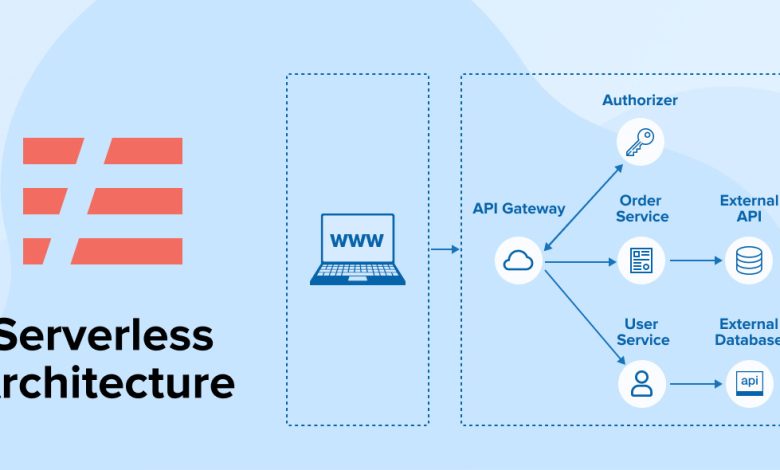Introduction to Serverless Architecture

The way we build and deploy applications is constantly evolving. Not long ago, developers had to manage physical servers or complex cloud infrastructure. But today, serverless architecture allows you to build applications without worrying about server management at all.
In this article, we’ll explore what serverless architecture is, how it works, its benefits, drawbacks, and why it’s becoming one of the most popular choices in modern web development.
1. What Is Serverless Architecture?
Serverless doesn’t mean there are no servers—it means developers don’t manage them. Instead, cloud providers (like AWS, Google Cloud, Azure) handle server provisioning, scaling, and maintenance.
With serverless, you only focus on writing functions and deploying them. The provider runs them on demand.
✅ Example:
- You upload a function that resizes images.
- When a user uploads a photo, the function runs automatically.
- You pay only for the execution time.
2. How Serverless Works
Serverless applications are built around Functions-as-a-Service (FaaS).
Steps:
-
Developer writes a function (e.g.,
resizeImage()). - Deploys it to a serverless provider (AWS Lambda, Azure Functions, Google Cloud Functions).
- The provider runs it whenever triggered (HTTP request, file upload, database change).
- Provider automatically scales the function based on demand.
3. Benefits of Serverless Architecture
- No Infrastructure Management → Focus on code, not servers.
- Scalability → Functions scale automatically with traffic.
- Cost Efficiency → Pay only for what you use (no idle servers).
- Faster Development → Simplified deployment pipeline.
- Event-Driven → Perfect for microservices and APIs.
4. Popular Use Cases
- APIs & Microservices → Handle requests with serverless functions.
- Data Processing → Resize images, convert files, process logs.
- Chatbots & Notifications → Event-driven functions for messages.
- IoT Applications → Respond to device triggers in real time.
- Machine Learning → Run model inference on demand.
5. Serverless Providers
The most popular serverless platforms are:
- AWS Lambda → Most widely used, integrates with AWS ecosystem.
- Azure Functions → Strong with Microsoft stack.
- Google Cloud Functions → Flexible, good integration with Firebase.
- Cloudflare Workers → Edge-based serverless functions for global performance.
6. Example: Serverless API with AWS Lambda
This function runs whenever triggered by an HTTP request via AWS API Gateway.
7. Drawbacks of Serverless
- Cold Starts → Functions may take longer to run after inactivity.
- Vendor Lock-in → Functions tied to specific cloud provider.
- Limited Execution Time → Functions usually limited to a few seconds/minutes.
- Debugging Challenges → Harder to debug distributed serverless environments.
8. Serverless vs Traditional Architecture
| Feature | Traditional Servers | Serverless |
|---|---|---|
| Infrastructure Mgmt | ✅ Yes | ❌ No |
| Scaling | Manual/Auto | Automatic |
| Cost Model | Pay per server | Pay per execution |
| Deployment Speed | Slower | Faster |
9. Serverless and Microservices
Serverless is often used with microservices architecture:
- Each function represents a small, independent service.
- Easier to update, scale, and deploy without affecting the whole app.
10. Future of Serverless
Serverless adoption is growing rapidly. The future will likely bring:
- More edge-based serverless (running closer to users).
- Hybrid models combining containers and serverless.
- Improved tooling for monitoring and debugging.
Conclusion
Serverless architecture is transforming how developers build and scale applications. By removing server management, it allows teams to focus on building features, reduces costs, and automatically scales with demand.
While it’s not perfect—especially for long-running tasks—it’s an excellent choice for modern applications that need to be scalable, cost-efficient, and fast to deploy.
If you want to stay ahead in web development, learning serverless architecture is a must.

